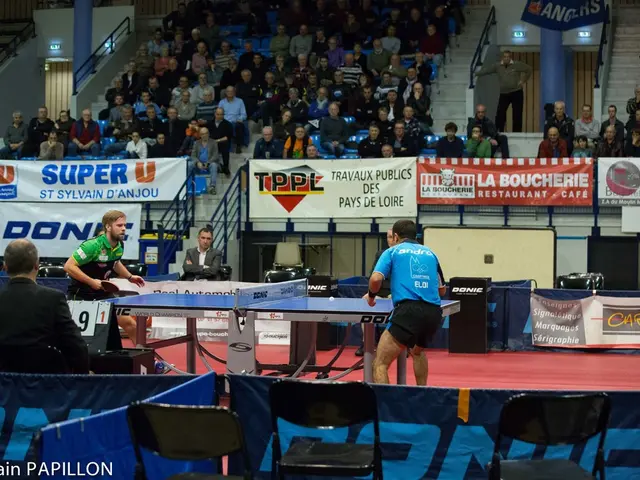Solar Power Systems of 4kW Capacity in the United Kingdom (July 2025)
In the quest for renewable energy solutions, a 4kW solar panel system has become a popular choice for homeowners. But what factors influence its efficiency and overall energy production? Let's delve into the key elements that can help you maximise your solar system's output.
Location plays a significant role in determining the energy generated by a solar panel system. The amount of sunlight your location receives, affected by local climate and weather patterns, directly impacts energy production. Sunnier areas yield higher production, while cloudy or less sunny regions reduce output. Modern panels do work in diffuse light, but peak production occurs under direct sunlight.
The efficiency and overall energy production of a 4kW solar panel system are also influenced by the panels' efficiency, roof orientation, and shading. Panel efficiency, the intrinsic ability of the panels to convert sunlight into electricity, is crucial. Higher efficiency panels generate more power from the same sunlight, which can be important if roof space is limited. Typical residential panels have efficiency ratings of around 15-22%.
Roof orientation significantly impacts energy generation. In the southern hemisphere, north-facing roofs offer optimal production with no loss, as they receive the most sunlight throughout the day. East- or west-facing roofs reduce output by approximately 7-12%, depending on exact direction, since they receive sunlight predominantly in the morning or afternoon, respectively. South-facing roofs face the most significant losses—around 28% less production—and are generally not recommended.
Conversely, in the northern hemisphere, south-facing roofs are ideal, followed by west and east-facing panels. The orientation affects not just total energy but also the timing of production, aligning with household energy use.
Shading has a strong negative effect, especially during peak sunlight hours (9 am to 3 pm). Even partial shading on one panel can reduce the performance of the entire system string since panels in a string operate at the same voltage. Optimizations like splitting arrays into multiple strings or using microinverters can mitigate some shading losses, but overall shade should be minimised to maximise efficiency.
Roof pitch matters; an ideal tilt angle (often between 20° to 50° depending on latitude) maximises sunlight capture. Ground-mounted or pole-mounted panels can be more efficient because they allow optimal orientation and tilt, and avoid shading inherent to rooftops, improving efficiency by up to about 25% compared to rooftop panels.
To be eligible for the SEG (Small-Scale Low-Carbon Electricity Generator), you need a system like a 4kW solar system. To receive payments from the SEG, your installer must be MCS-certified. It's best to get quotes from trusted professionals when considering a 4kW solar system. A 4kW system consists of 8 (450W) or 10 (350W) solar panels and requires about 16m2 to 20m2 of roof space.
A 4kW solar system can generate approximately 3,000 - 3,400 kWh of electricity per year and save up to £730 on annual electricity bills. The cost of a 4kW solar system is roughly £5,000 - £6,000, but it can vary depending on the prices set by installers. The first year return for a 4kW solar system installation is around £730. The tariff for exporting surplus energy back to the grid under the Smart Export Guarantee (SEG) is between 5-6p per kWh exported. The system will pay for itself in approximately 5 years and provide savings of around £18,250 over a 25-year period.
For a larger 6kW solar system, savings will be even larger. The average Lithium solar battery size for a 2 to 3-person household is between 10kWh to 20kWh. GreenMatch aims to connect customers with the right product and supplier. Sabria Schouten, a content writer, aims to make information about sustainable energy broadly available. Installing solar panels on a south-facing roof results in the highest power output.
In summary, for a 4kW solar system, maximised efficiency occurs on a well-located, unshaded, north-facing roof (for southern hemisphere) or south-facing roof (for northern hemisphere), with panels having high efficiency ratings and an optimal tilt angle. Any deviation from these conditions—such as shading, suboptimal orientation, or a less sunny location—can cause production losses ranging roughly from 7% up to 28% or more. Proper design considering these factors is critical to approaching the system’s rated performance.
Gadgets like solar panels are part of the modern technology revolution that promotes renewable energy solutions. To maximize the energy production of a 4kW solar panel system, one should consider factors such as the panels' efficiency, roof orientation, and shading. For instance, panels with higher efficiency ratings generate more power from the same sunlight, and north-facing roofs (in the southern hemisphere) or south-facing roofs (in the northern hemisphere) provide optimal energy production.






